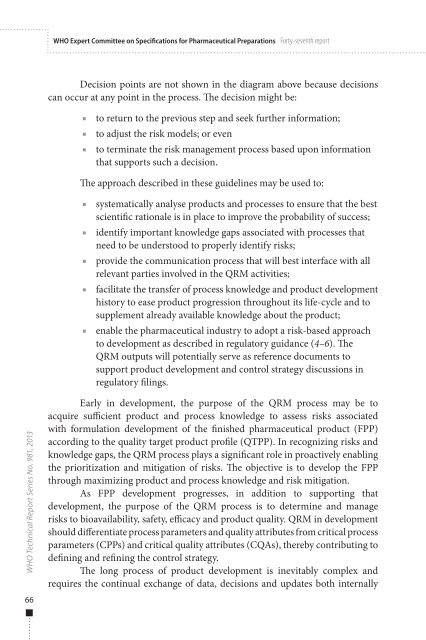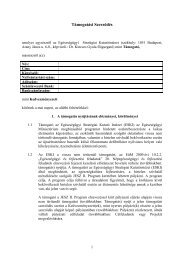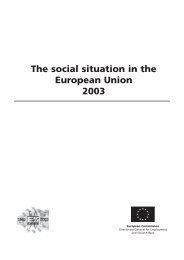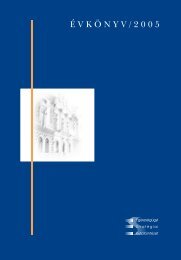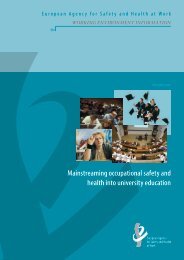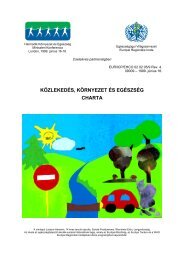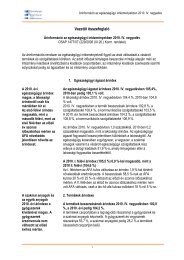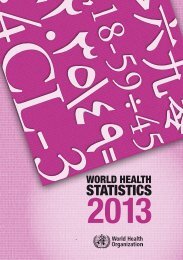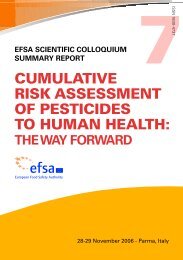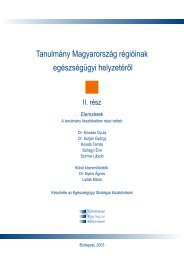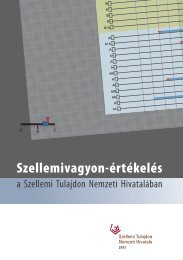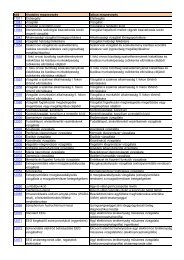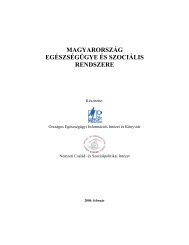WHO Technical Report Series, No. 981 - World Health Organization
WHO Technical Report Series, No. 981 - World Health Organization
WHO Technical Report Series, No. 981 - World Health Organization
You also want an ePaper? Increase the reach of your titles
YUMPU automatically turns print PDFs into web optimized ePapers that Google loves.
<strong>WHO</strong> Expert Committee on Specifications for Pharmaceutical Preparations Forty-seventh report<br />
Decision points are not shown in the diagram above because decisions<br />
can occur at any point in the process. The decision might be:<br />
■■<br />
■■<br />
■■<br />
to return to the previous step and seek further information;<br />
to adjust the risk models; or even<br />
to terminate the risk management process based upon information<br />
that supports such a decision.<br />
The approach described in these guidelines may be used to:<br />
■■<br />
■■<br />
■■<br />
■■<br />
■■<br />
systematically analyse products and processes to ensure that the best<br />
scientific rationale is in place to improve the probability of success;<br />
identify important knowledge gaps associated with processes that<br />
need to be understood to properly identify risks;<br />
provide the communication process that will best interface with all<br />
relevant parties involved in the QRM activities;<br />
facilitate the transfer of process knowledge and product development<br />
history to ease product progression throughout its life-cycle and to<br />
supplement already available knowledge about the product;<br />
enable the pharmaceutical industry to adopt a risk-based approach<br />
to development as described in regulatory guidance (4–6). The<br />
QRM outputs will potentially serve as reference documents to<br />
support product development and control strategy discussions in<br />
regulatory filings.<br />
<strong>WHO</strong> <strong>Technical</strong> <strong>Report</strong> <strong>Series</strong> <strong>No</strong>. <strong>981</strong>, 2013<br />
66<br />
Early in development, the purpose of the QRM process may be to<br />
acquire sufficient product and process knowledge to assess risks associated<br />
with formulation development of the finished pharmaceutical product (FPP)<br />
according to the quality target product profile (QTPP). In recognizing risks and<br />
knowledge gaps, the QRM process plays a significant role in proactively enabling<br />
the prioritization and mitigation of risks. The objective is to develop the FPP<br />
through maximizing product and process knowledge and risk mitigation.<br />
As FPP development progresses, in addition to supporting that<br />
development, the purpose of the QRM process is to determine and manage<br />
risks to bioavailability, safety, efficacy and product quality. QRM in development<br />
should differentiate process parameters and quality attributes from critical process<br />
parameters (CPPs) and critical quality attributes (CQAs), thereby contributing to<br />
defining and refining the control strategy.<br />
The long process of product development is inevitably complex and<br />
requires the continual exchange of data, decisions and updates both internally


